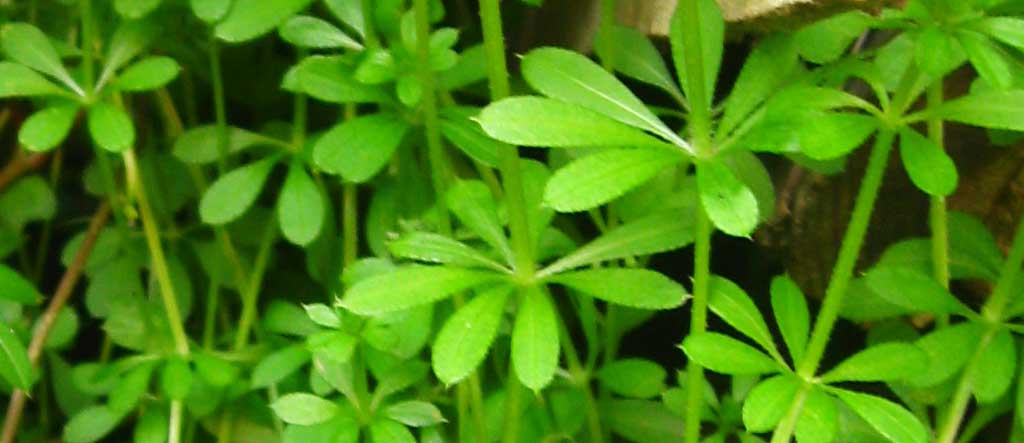Gallium aparine
Parts used: leaves and stems, seeds
Finding and identifying Cleavers
Cleavers start to reappear in early spring. They can be found in hedgerows, and in sheltered spots along paths, streams, fields and on waste ground. The narrow lance-shaped leaves grow directly out of the stem in whorls of 6 to 9. They are creeping plants covered in tiny hairs that will hook onto shrubs and trees and can grow up to several metres high. From late spring through early summer, tiny white flowers appear. They have 4 petals and 4 yellow stamens.
When to harvest Cleavers
You can harvest the leaves and tender stems from late February through early summer. As the plant grows the leaves and stems get tougher and less palatable. Collect the tender leaves and stems in Spring and add to salads. The leaves can also be added to soups and stews or lightly steamed with other spring greens.
The medicinal benefits of cleavers
Actions: diuretic, alterative, anti-inflammatory, tonic
Cleavers are best known and appreciated for their ability to cleanse the lymphatic system. A clean, free flowing lymphatic system is essential to maintaining a healthy body. The 3 main functions of the lymphatic system are:
- Balance fluids between blood and tissue throughout the body.
- Cleanse the lymph of metabolic waste before being returned to the bloodstream.
- Assist the immune system by defending the body against infection.
The leaves can be dried or used fresh for teas. A nice way to enjoy young cleavers is to juice them, or make cold infusions by pounding the leaves, putting them into a glass carafe or jar, pour on water, cover and let sit for 4 or more hours. Strain off the water and drink for a refreshing beverage that will promote the flow of lymphatic fluids and the flow of urine.
Cleavers are in the coffee family of plants. The seeds can be harvested, roasted and then ground and used as a coffee substitute.
